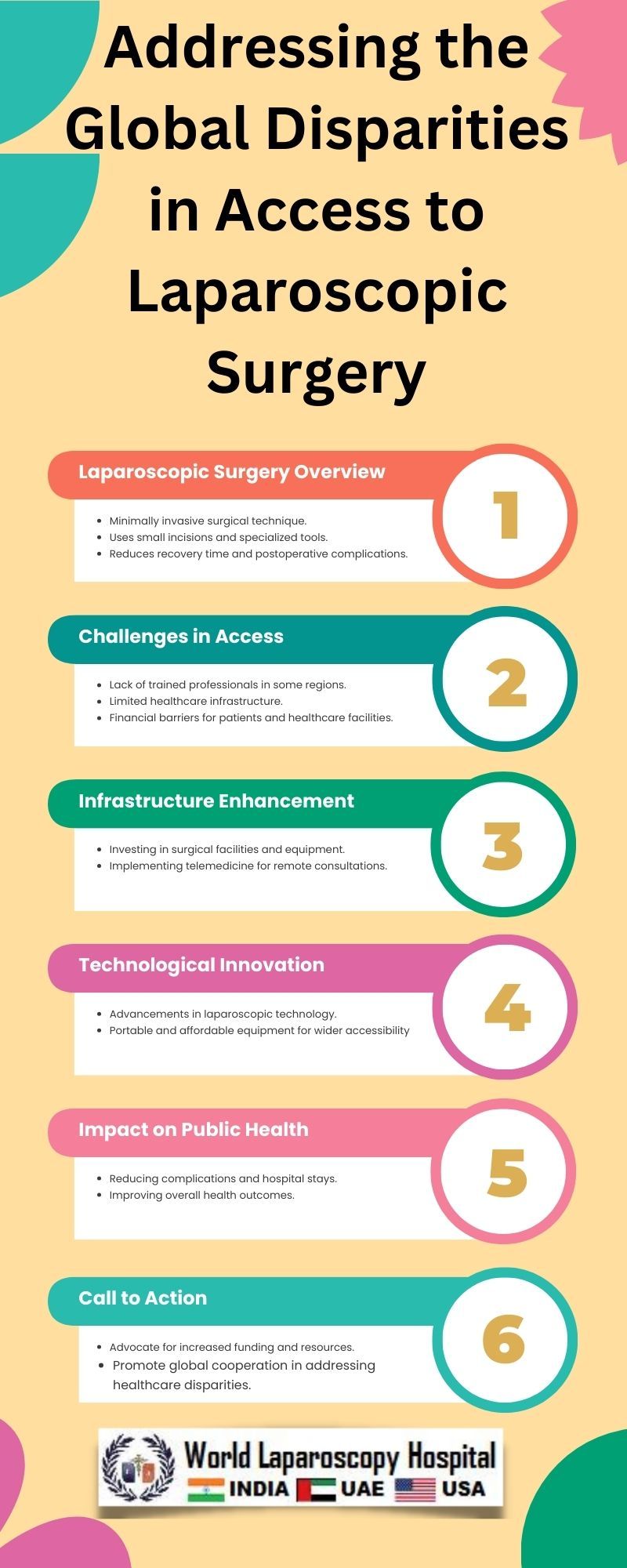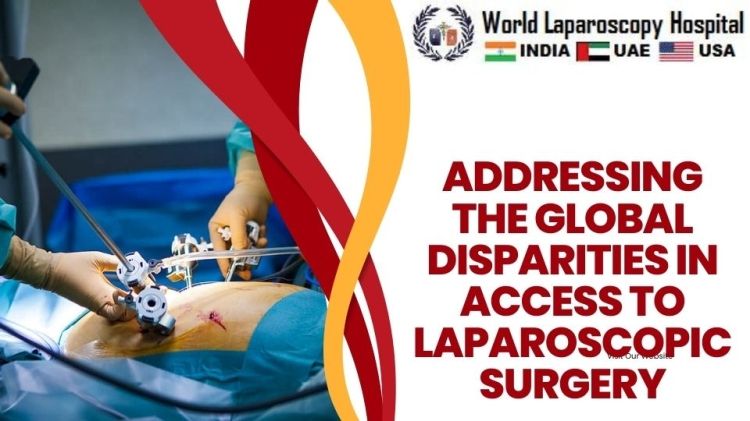Addressing the Global Disparities in Access to Laparoscopic Surgery
Introduction:
In an era of advanced medical technologies, the benefits of laparoscopic surgery are undeniable – reduced pain, shorter recovery times, and minimal scarring. However, these advantages are not universally accessible, as global disparities in access persist. This article explores the root causes of these disparities and proposes comprehensive strategies to address the challenges and promote equitable access to laparoscopic surgery worldwide.

Understanding Laparoscopic Surgery:
Laparoscopic surgery, also known as minimally invasive surgery, involves using small incisions and specialized instruments with the aid of a camera to perform procedures. This technique has revolutionized the field of surgery by offering patients less pain, faster recovery, and shorter hospital stays compared to traditional open surgeries.
The Disparities:
Economic Disparities:
Economic factors play a significant role in limiting access to laparoscopic surgery. High costs associated with equipment, training, and infrastructure development pose barriers for healthcare systems in low-income countries. Affordability remains a key challenge, preventing many individuals from benefiting from minimally invasive procedures.
Educational Disparities:
The successful implementation of laparoscopic surgery requires skilled healthcare professionals. Disparities in medical education and training programs contribute to a shortage of adequately trained surgeons, nurses, and support staff in certain regions. Limited educational resources and outdated curricula hinder the development of laparoscopic skills among healthcare professionals.
Technological Disparities:
Advanced laparoscopic equipment is not uniformly available across the globe. Many developing regions lack access to the latest technology, hindering the adoption of laparoscopic techniques. Limited infrastructure, including reliable electricity and connectivity, further impedes the widespread integration of minimally invasive surgery.
Infrastructure Disparities:
Building and maintaining the infrastructure necessary for laparoscopic surgery, including specialized operating rooms and recovery facilities, present significant challenges in resource-limited settings. The lack of proper infrastructure limits the implementation of minimally invasive procedures in many healthcare institutions.
Strategies for Addressing Disparities:
Financial Support and Funding:
Initiatives aimed at reducing the economic burden of laparoscopic surgery are essential. Governments, international organizations, and philanthropic entities should collaborate to provide financial support for the acquisition of equipment, training programs, and infrastructure development in regions facing economic challenges.
Training Programs and Skill Development:
Investing in comprehensive training programs for healthcare professionals is crucial. This includes updating medical curricula to incorporate laparoscopic techniques, establishing specialized training centers, and facilitating knowledge exchange between experienced surgeons and those in regions with limited access to educational resources.
Technological Innovation and Collaboration:
Encouraging innovation in laparoscopic technology can enhance accessibility. Collaborations between developed and developing countries, as well as partnerships between public and private sectors, can facilitate the transfer of knowledge and technology, fostering a more equitable distribution of advanced surgical tools.
Telemedicine and Remote Assistance:
Leveraging telemedicine and remote assistance can overcome geographical barriers. Establishing telemedicine networks that connect experienced surgeons with healthcare professionals in underserved areas allows for real-time guidance, support, and collaboration, improving the quality of laparoscopic procedures.
Community Engagement and Awareness:
Community engagement is vital in promoting awareness and acceptance of laparoscopic surgery. Initiatives that educate communities about the benefits of minimally invasive procedures can help dispel myths and cultural barriers, encouraging people to seek these advanced treatments when needed.
Global Advocacy and Policy Support:
Advocacy at the global level is necessary to draw attention to the disparities in access to laparoscopic surgery. International organizations, professional medical associations, and policymakers should collaborate to develop policies that prioritize the equitable distribution of resources and promote the integration of laparoscopic techniques into global healthcare systems.
Conclusion:
Addressing global disparities in access to laparoscopic surgery requires a multifaceted approach that encompasses financial support, education, technological innovation, and community engagement. By acknowledging the unique challenges faced by different regions, the global healthcare community can work together to ensure that the benefits of minimally invasive surgery are accessible to all, regardless of economic or geographical constraints. Through collaborative efforts, we can bridge the gap and pave the way for a more equitable future in surgical healthcare.


